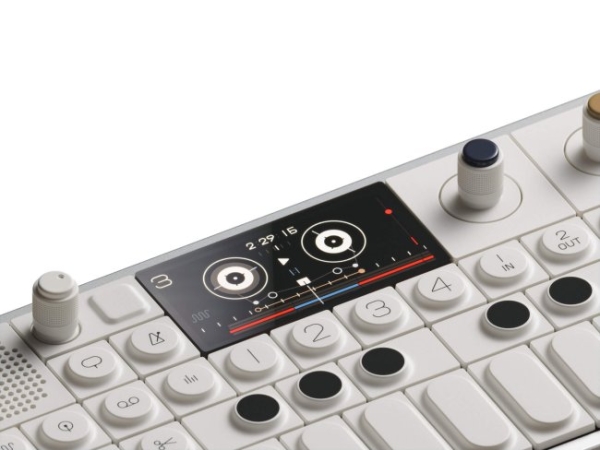Set Your Own Price for a Teenage Engineering OP-1 Field. Why? “Why not?”
In a world where prices are usually set in stone, one bold idea dares to break the mold: "Set your own price for a Teenage Engineering OP-1 Field." The catchphrase? “Why not?” It’s not just a rhetorical question — it’s a challenge to rethink value, creativity, and what the market truly reflects. The OP-1 Field is a piece of musical hardware that has inspired an entire generation of producers, sound designers, and experimental artists. And now, the idea of paying what you believe it's worth is both provocative and oddly fitting.
Let’s unpack why this concept makes sense — and more importantly — why it needs to be considered.
The OP-1 Field: A Creative Icon
Before diving into the philosophy behind "set your own price," let’s give the OP-1 Field its flowers.
Teenage Engineering’s OP-1 Field is more than just a synthesizer. It's a sampler, a multi-track recorder, an effects unit, and a creative playground all in one slim, ultra-portable device. With a stunning aluminum body, a vibrant high-res display, and unique tactile controls, the OP-1 Field isn’t just a piece of gear — it’s an experience. Its minimalist design masks a deep, intricate system capable of incredibly rich and layered music-making.
But it comes with a hefty price tag: $1,999 USD. That figure alone has sparked debate in forums, Reddit threads, and YouTube comments for years.
And now — someone suggests setting your own price?
Why This Idea Resonates: Challenging the Gatekeepers
Music gear has long had gatekeepers. High-end synths, mixers, and recording equipment often cater to those with disposable income or access to industry resources. This naturally sidelines independent artists, bedroom producers, and young talents just starting out.
By allowing users to set their own price for the OP-1 Field, the model does something radical: it removes the gate.
This isn’t just about affordability — it's about democratizing creativity. If someone believes the OP-1 Field is worth $1,999 and can afford it, they’ll pay it. But if a 17-year-old producer in Jakarta wants to pay $400 because that's all they can manage, they should have the chance to offer it. And perhaps, just perhaps, that producer will go on to create the next sound that shapes our future.
The message here is: Art shouldn’t be boxed in by price barriers.
What Is Value, Really?
The next question becomes: What is value?
To some, value is dictated by rarity, craftsmanship, and brand prestige. For others, it’s measured in what the product empowers them to do. The OP-1 Field is priced high due to its design, engineering, and niche appeal. But what if value was determined by the user’s experience with it?
-
A touring producer might make their next album entirely on the OP-1 Field.
-
A teacher might use it to inspire students to explore sound design.
-
A hobbyist might only ever make a few tracks — but those few could change their life.
Letting people set their own price isn't devaluing the product — it’s letting them define what it means to them. In this model, price becomes a conversation, not a command.
Why Not? It’s a Philosophy
The phrase “Why not?” is deceptively simple — but it’s a powerful statement when tied to a product like the OP-1 Field.
-
Why not let the market speak?
-
Why not trust your community?
-
Why not support those who can’t pay full price but might give back tenfold in creativity, loyalty, and innovation?
It’s an anti-corporate stance in a way, a rejection of rigid pricing structures that often exclude and exploit. It’s also a bold experiment in human trust. Are people honest enough to pay what something is truly worth to them? If history has taught us anything from the likes of Radiohead’s In Rainbows (which launched with a "pay what you want" model), the answer is yes — and then some.
Pay-What-You-Can Models Have Precedent
While it may sound outlandish in the world of high-end music gear, the pay-what-you-can (PWYC) model isn’t new:
-
Radiohead’s "In Rainbows" (2007): Fans paid between $0 and $100 for the album. The result? Millions in revenue and a fanbase that felt respected and involved.
-
Software platforms like Reaper and Bandcamp: These allow flexible pricing or tip-based support models, and they thrive.
-
Patreon and Ko-fi: These platforms have proven that creators can earn a sustainable living when fans are given control over what they contribute.
So, why not apply that same principle to music gear — especially a device as uniquely beloved as the OP-1 Field?
The Counter-Argument: “But It’s Too Expensive to Make!”
Of course, the skeptics have a point: The OP-1 Field is an expensive product to manufacture. High-quality materials, specialized components, and a niche market mean the margins aren’t enormous. But setting your own price doesn’t mean everyone pays $100. It means opening a window for community-based pricing tiers.
Here’s how it could work:
-
Suggested Retail: $1,999
-
Sliding Scale Options: $999 / $1,299 / $1,599
-
Name Your Price (with a minimum): $499 minimum, with optional justification required.
By structuring the model smartly, Teenage Engineering could:
-
Maintain brand integrity.
-
Encourage accessibility.
-
Gather data on what people are actually willing to pay.
-
Build massive goodwill — and long-term customers.
The Psychological Twist: What Happens When People Choose?
When given the power to choose a price, people often pay more than you think.
That’s because the transaction becomes emotional, not just financial. The buyer is now a participant in the story. They feel trusted, respected, and valued — and in return, they value the product more.
It also shifts the mindset from consumerism to contribution. You're no longer just buying a synthesizer — you're supporting an ethos, a movement, a creative revolution.
What It Means for Teenage Engineering
Teenage Engineering has always danced to its own beat. From quirky pocket operators to the modular OB-4 and the now-iconic OP-1, their design language and product philosophy are unlike anyone else’s.
By embracing a “set your own price” model, even if temporarily or in limited batches, Teenage Engineering would:
-
Cement their role as industry rebels.
-
Attract new, younger audiences.
-
Create a cultural ripple effect across the music tech industry.
-
Turn buying into storytelling.
Imagine the Instagram stories: “I paid $300 for an OP-1 Field and made my first EP.” Or, “I paid full price because it changed how I think about sound forever.”
That kind of word-of-mouth? Priceless.
Is It Sustainable?
Let’s be honest: no business model survives without a backbone. So is this model sustainable?
Yes — with smart guardrails. Here’s how it could work:
-
Time-Limited Campaigns: Offer this pricing model for 30 days a year.
-
Creative Grants or Subsidies: Partner with organizations to support purchases by low-income artists.
-
Verified Artist Applications: Let artists submit a use case to access a discount.
-
Tiered Community Pricing: Let fans choose from three set prices based on what they can afford.
Each version preserves brand value while opening new doors for users across the globe.
A Revolution in Music-Making Access
This model isn’t just about economics. It’s about values. It asks:
-
Do we believe creativity should be reserved for the wealthy?
-
Can we trust people to honor quality with fair payment?
-
Should gear companies serve only their most affluent fans — or the entire spectrum of the creative community?
By saying “Why not?”, we give room for possibilities. For a high school student in Nigeria. For a noise artist in Berlin. For a hip-hop producer in Detroit.
They deserve the chance to touch greatness. To explore the sonic universe. To fall in love with the tactile joy of knobs, buttons, and endless potential.
And what better device to carry that revolution than the Teenage Engineering OP-1 Field?
Final Thoughts
The idea of setting your own price for a piece of premium hardware like the OP-1 Field might seem wild. Risky. Idealistic, even. But it’s also the kind of thinking that pushes industries forward.
It’s not about lowering the value of the OP-1 Field. It’s about amplifying the value of creativity. It's about recognizing that the tools we give artists can shape the future of music, culture, and connection.
So next time someone says, “Set your own price for a Teenage Engineering OP-1 Field?” — don’t ask “Why?”
Ask, “Why not?”


